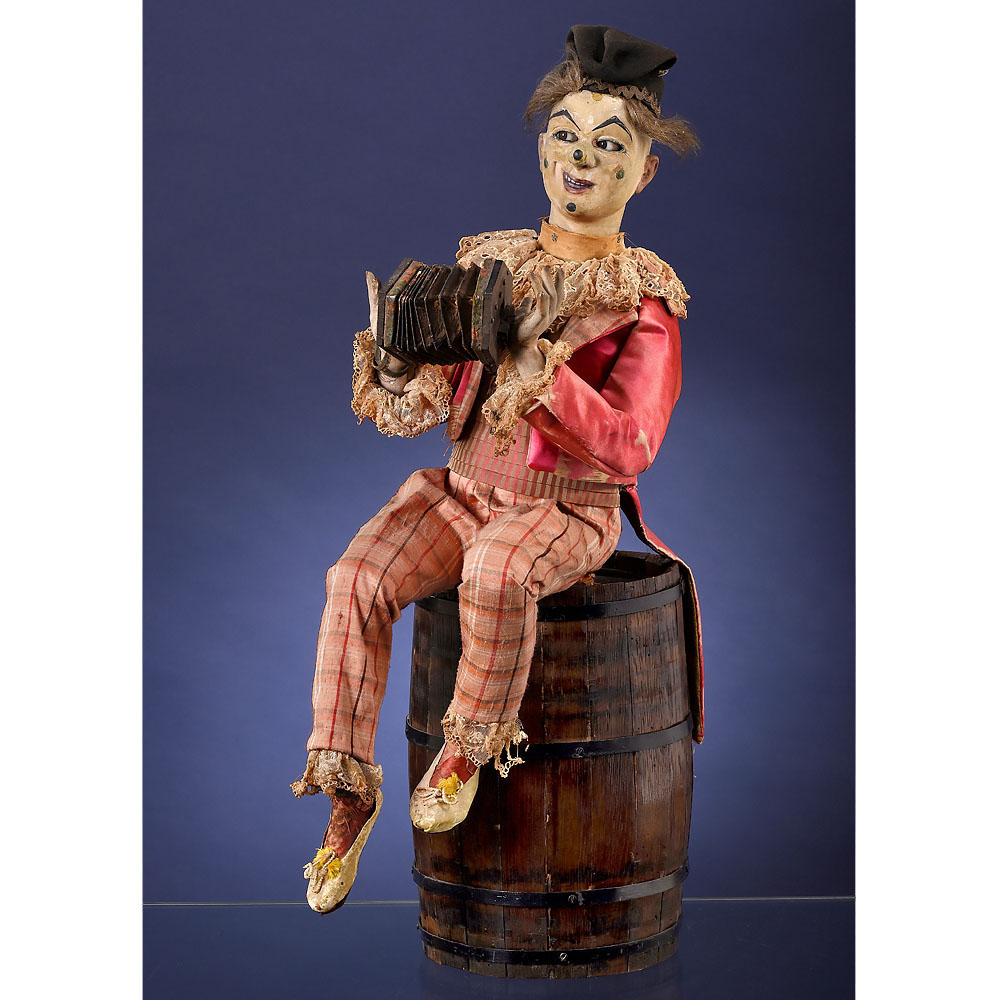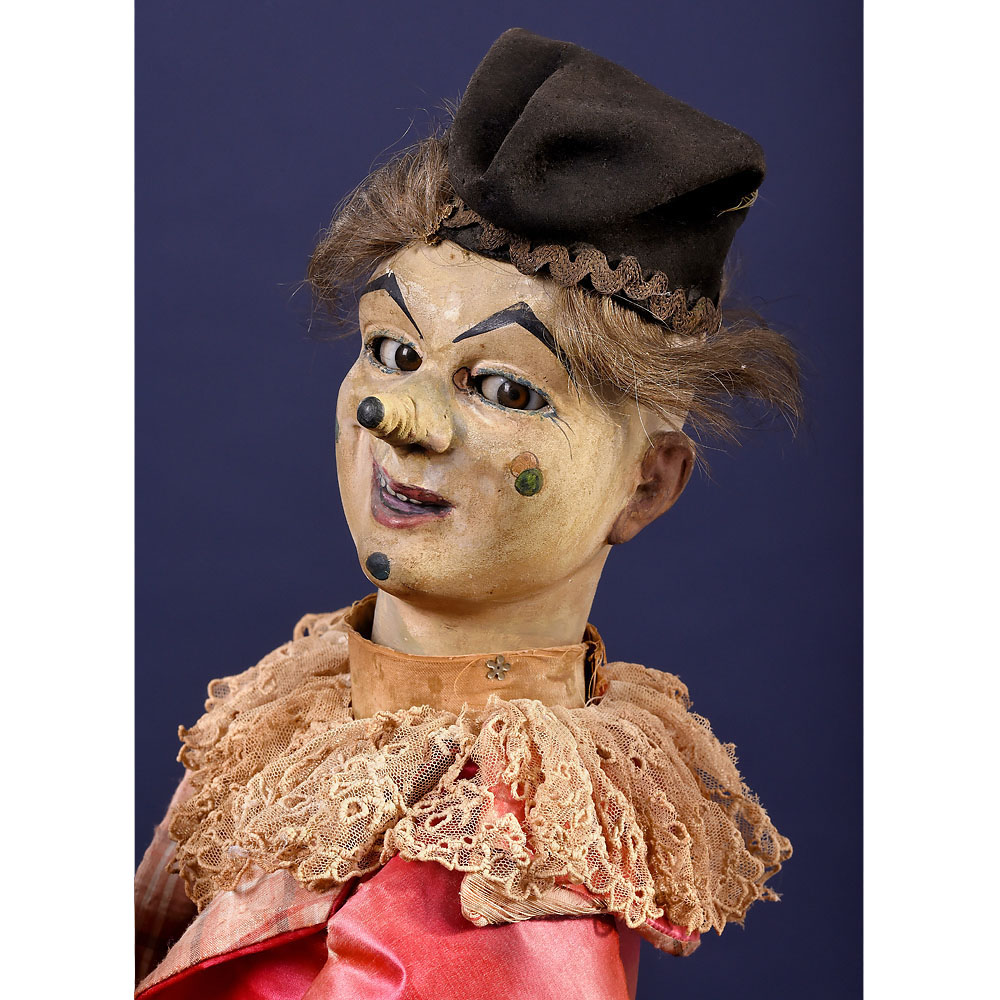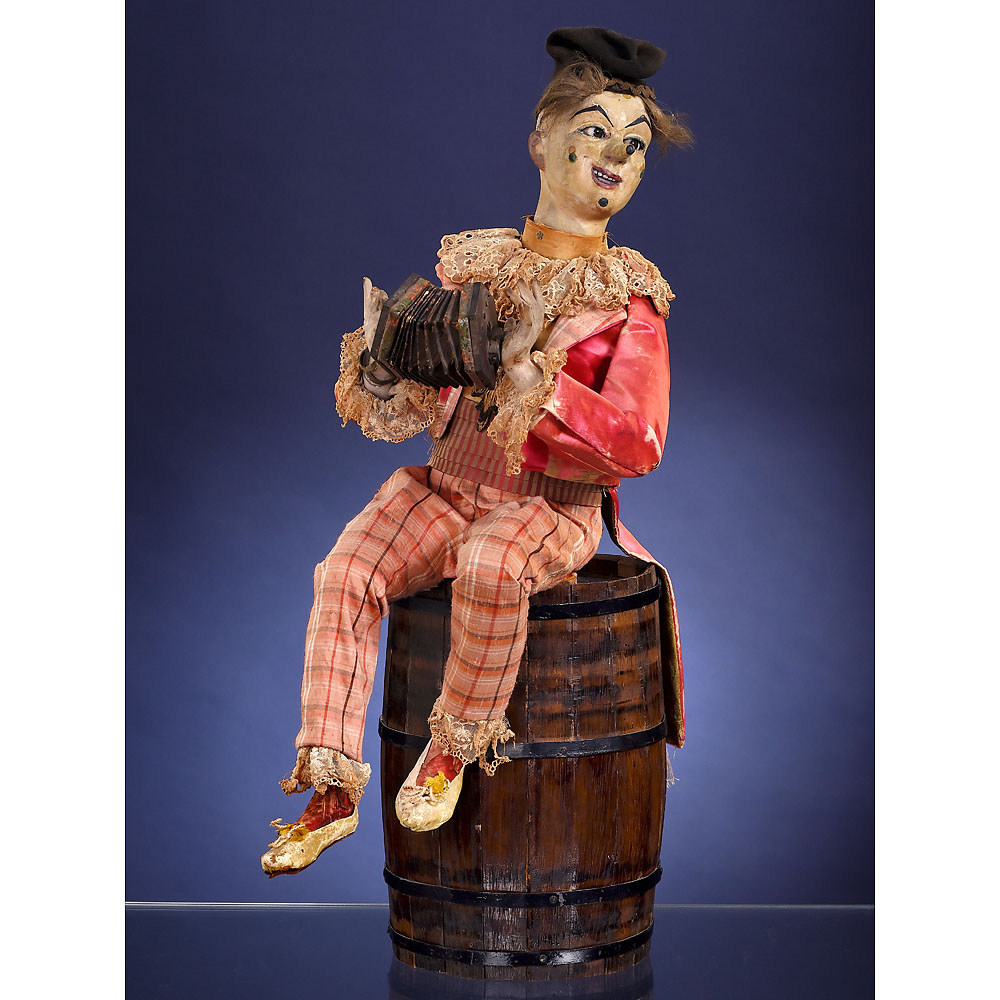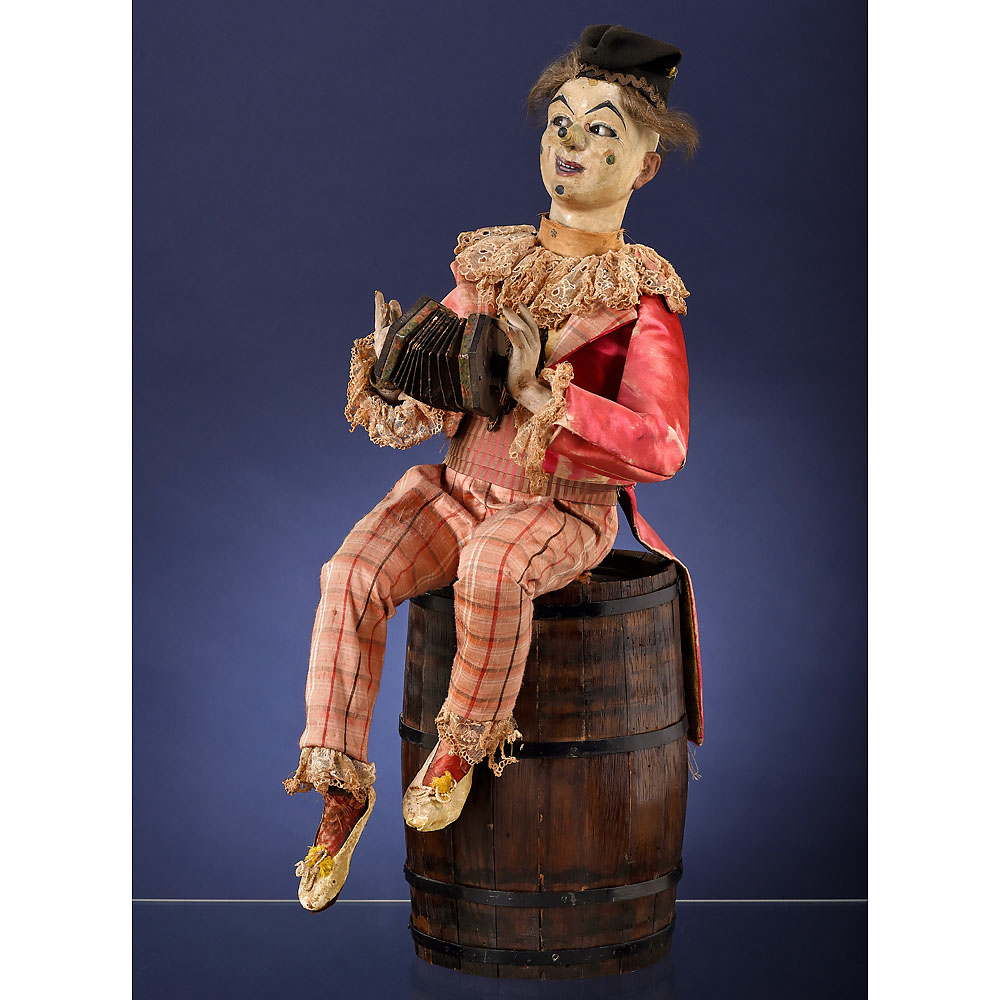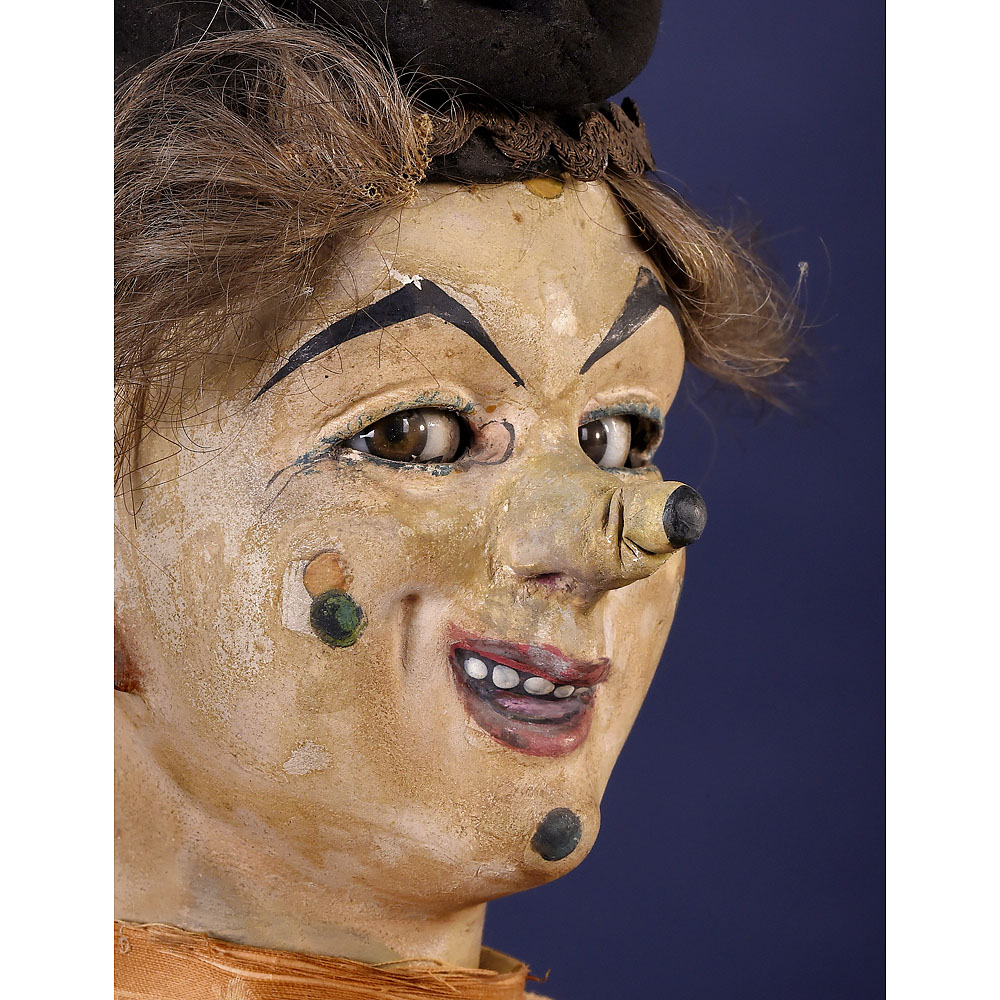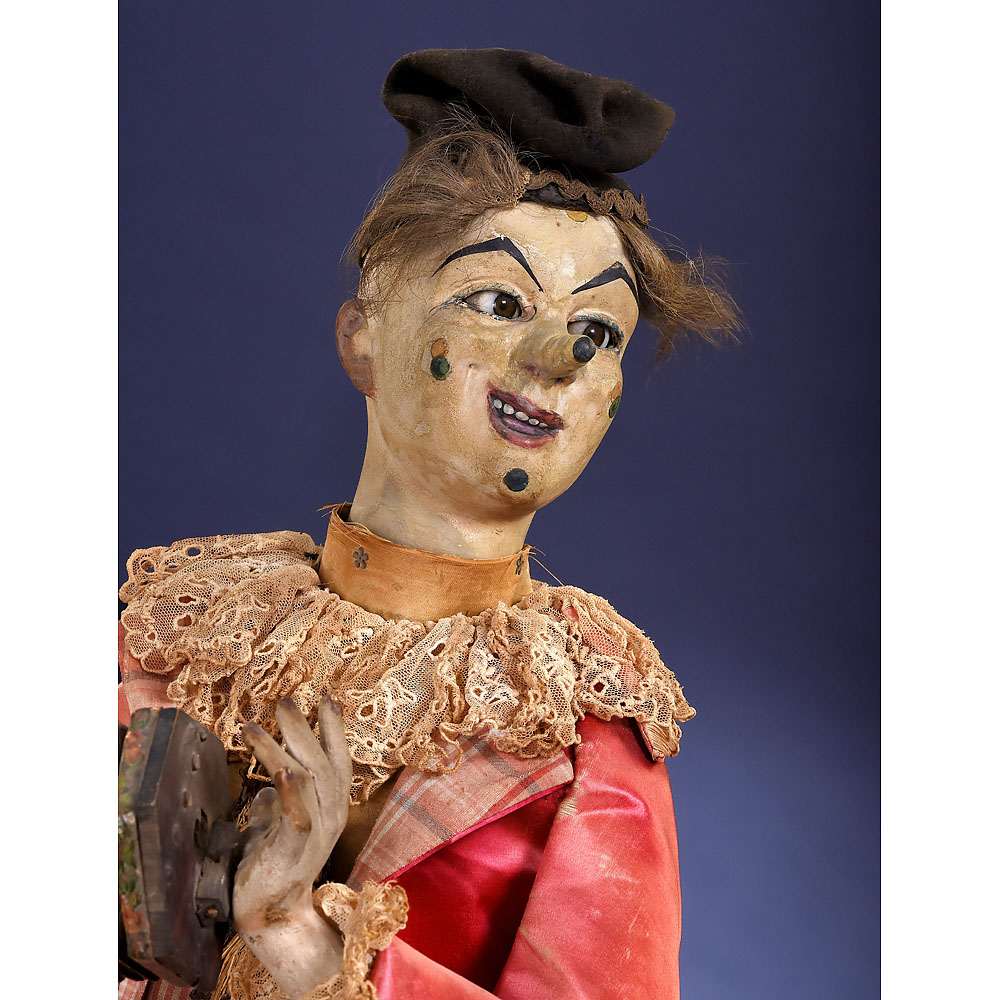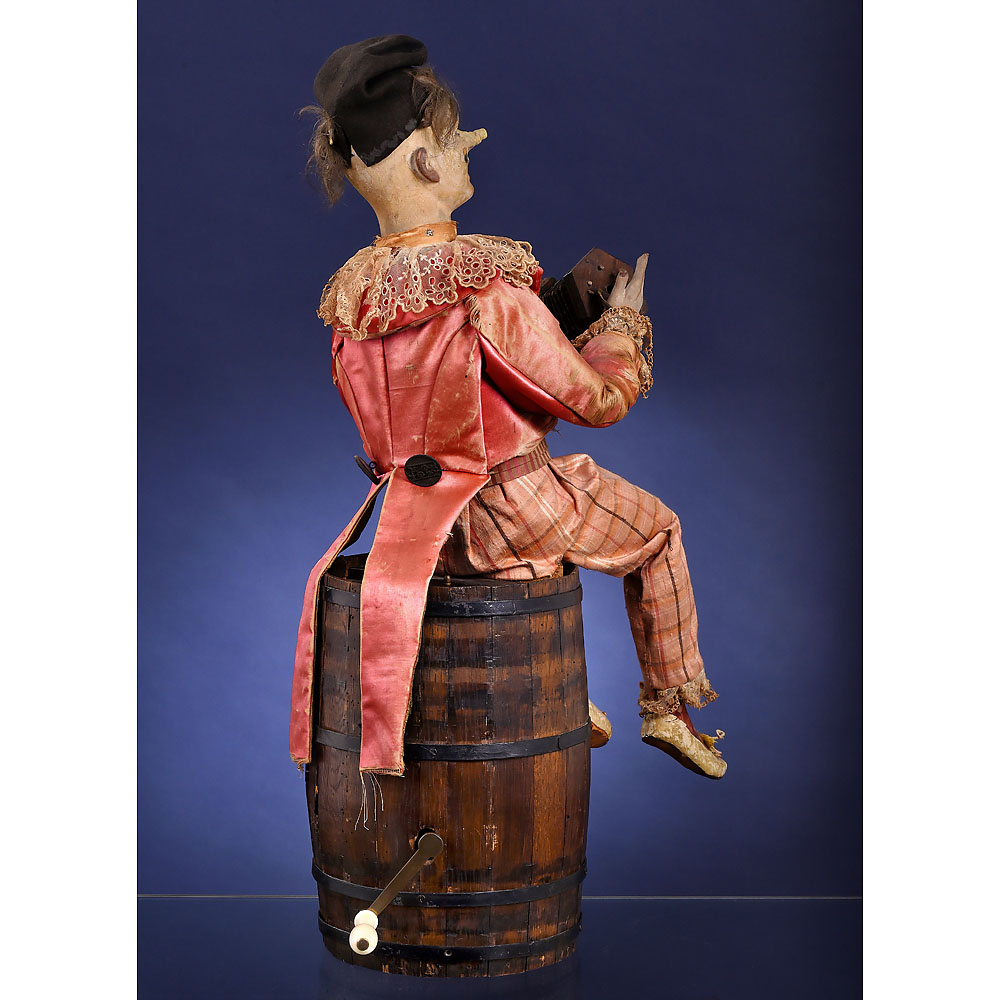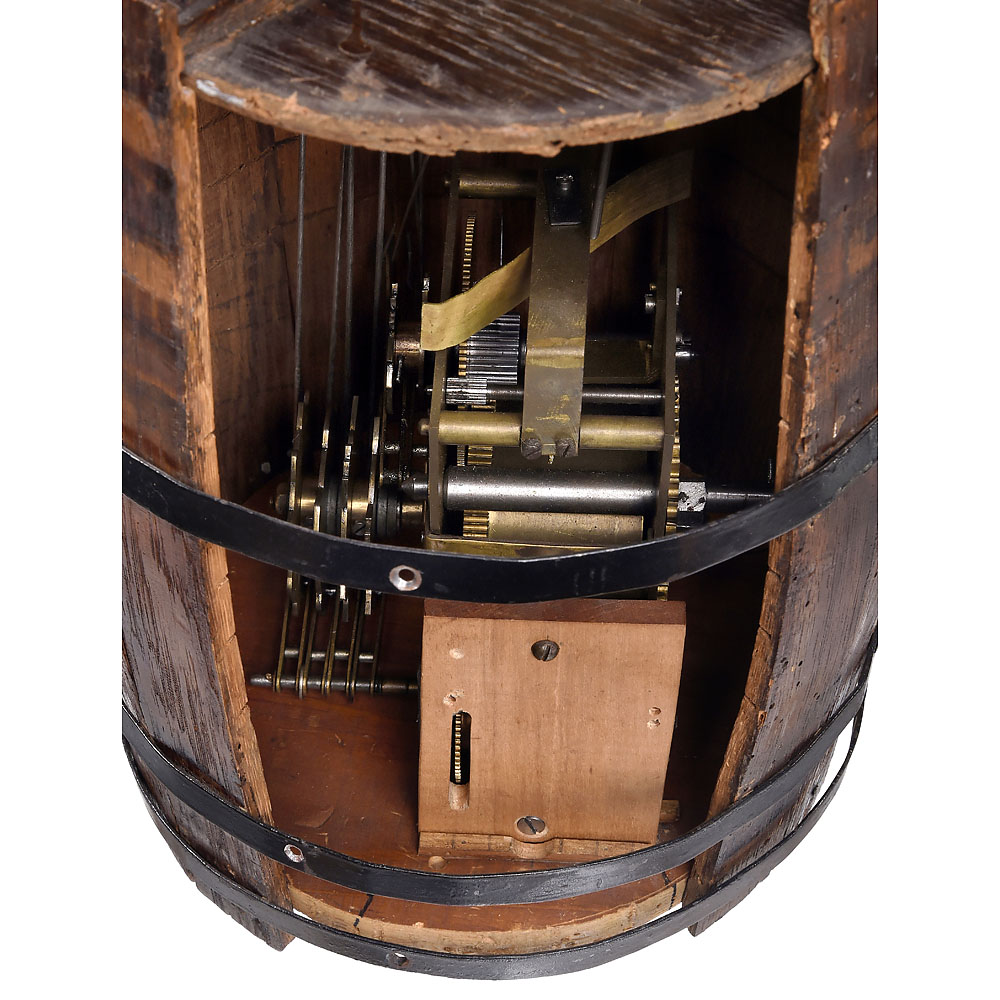“Claude the Clown” Musical Automaton by Gustave Vichy, c. 1890
Starting bid: € 15.000 | Estimate: € 18.000 – 25.000
Depicting a clown jauntily playing the concertina atop a banded wood barrel, with plaster-composition character head decorated with painted colored discs, articulated eyes, nose and right foot, the going-barrel motor with six cams and single-air cylinder movement causing Claude to turn and nod his head, move both hands and tap his foot as his eyes dart from left to right and his nose moves in and out in time to the music, dressed in checked silk breeches and magenta satin tailcoat trimmed with lace, ht. 26 in. (66 cm), good working condition, cylinder movement an old replacement, baseboard of barrel replaced, with bone-handled crank and Vichy acorn-form stop / start.
Literature: For similar pieces, see: Christian and Sha-ron Bailly, “Automates Anciens”, exhibition at the Hospice Saint-Charles, 25. Nov – 30. Dec. 1995; An-drea Robertson, “Museum of Automata”, p. 38.
With his lopsided grin, raised eyebrows and unique ar-ticulated nose, which mimics the folds and the move-ments of the concertina, “Claude” has one of the most remarkable faces in the Vichy oeuvre. The automaton was not illustrated in the Vichy catalogue and surviving examples are exceedingly rare. We know of only four others: one in the former Museum of Automata in York, England, one exhibited at the Hospice Saint-Charles in Paris in 1995 and two in private European collections.
Owen, “Automata, Uncle Podger: ‘Thank you, my dear’”. Excellent primary research material.
Musik-Puppenautomat “Claude der Clown” von Gustave Vichy, um 1890
Darstellung eines fröhlich Ziehharmonika spielenden Clowns auf einem Holzfass. Der Kopf der Figur ist aus Gips gefertigt und mit farbigen Kreisen verziert, mit beweglichen Augen, Nase und rechtem Fuß, der Motor mit sechs Nocken und einem Walzenspielwerk befinden sich im Fass, die Mechanik bringt Claude dazu, sich zu drehen und mit dem Kopf zu nicken, beide Hände zu bewegen und mit dem Fuß zu klopfen, während seine Augen von links nach rechts huschen und seine Nase sich im Takt der Musik ein- und auswärts bewegt, be-kleidet mit einer karierten Seidenhose und einem magentafarbenen Satinfrack mit Spitzenbesatz, Höhe 66 cm, guter Zustand, Walzenspielwerk ein früher Ersatz, Bodenplatte des Fasses ersetzt, Kurbel mit Griff aus Bein, mit Vichy eichelförmigem Stop/Start Knopf.
Literatur: Für ähnliche Stücke, siehe: Christian und Sharon Bailly, “Automates Anciens”, Ausstellung im Hospice Saint-Charles, 25. Nov – 30. Dez. 1995; Andrea Robertson, “Museum of Automata”, S. 38.
Mit seinem schiefen Grinsen, den hochgezogenen Augenbrauen und der einzigartigen, beweglichen Nase, die die Falten und Bewegungen der Ziehharmonika nachahmt, hat “Claude” eines der bemerkenswertesten Gesichter der Vichy-Automaten. Der Automat wurde im Vichy-Katalog nicht abgebildet, und die erhaltenen Exemplare sind äußerst selten. Wir kennen nur vier weitere Exemplare: eines im ehemaligen Automatenmuseum in York, England, eines, das 1995 im Hospice Saint-Charles in Paris ausgestellt wurde, und zwei in europäischen Privatsammlungen.
Owen, “Automata, Onkel Podger: ‘Danke, meine Liebe'”. Ausgezeichnetes Material für die Primärforschung.

